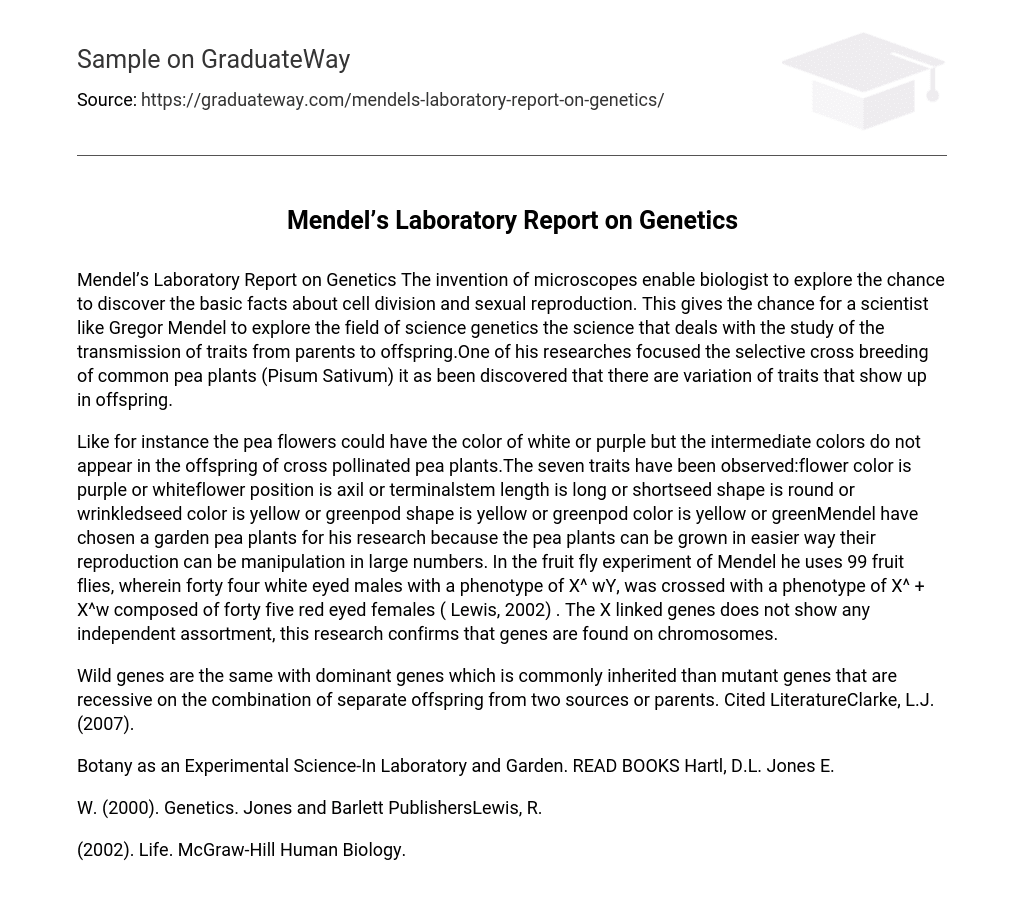The invention of microscopes enable biologist to explore the chance to discover the basic facts about cell division and sexual reproduction. This gives the chance for a scientist like Gregor Mendel to explore the field of science genetics the science that deals with the study of the transmission of traits from parents to offspring.One of his researches focused the selective cross breeding of common pea plants (Pisum Sativum) it as been discovered that there are variation of traits that show up in offspring.
Like for instance the pea flowers could have the color of white or purple but the intermediate colors do not appear in the offspring of cross pollinated pea plants. The seven traits have been observed:
- flower color is purple
- or whiteflower position is axil
- or terminalstem length is long
- or shortseed shape is round
- or wrinkledseed color is yellow
- or greenpod shape is yellow
- or greenpod color is yellow or green
Mendel have chosen a garden pea plants for his research because the pea plants can be grown in easier way their reproduction can be manipulation in large numbers. In the fruit fly experiment of Mendel he uses 99 fruit flies, wherein forty four white eyed males with a phenotype of X^ wY, was crossed with a phenotype of X^ + X^w composed of forty five red eyed females ( Lewis, 2002) .
The X linked genes does not show any independent assortment, this research confirms that genes are found on chromosomes. Wild genes are the same with dominant genes which is commonly inherited than mutant genes that are recessive on the combination of separate offspring from two sources or parents.
Cited Literature
- Clarke, L.J. (2007). Botany as an Experimental Science-In Laboratory and Garden. READ BOOKS
- Hartl, D.L. Jones E. W. (2000). Genetics. Jones and Barlett Publishers
- Lewis, R. (2002). Life. McGraw-Hill Human Biology.





